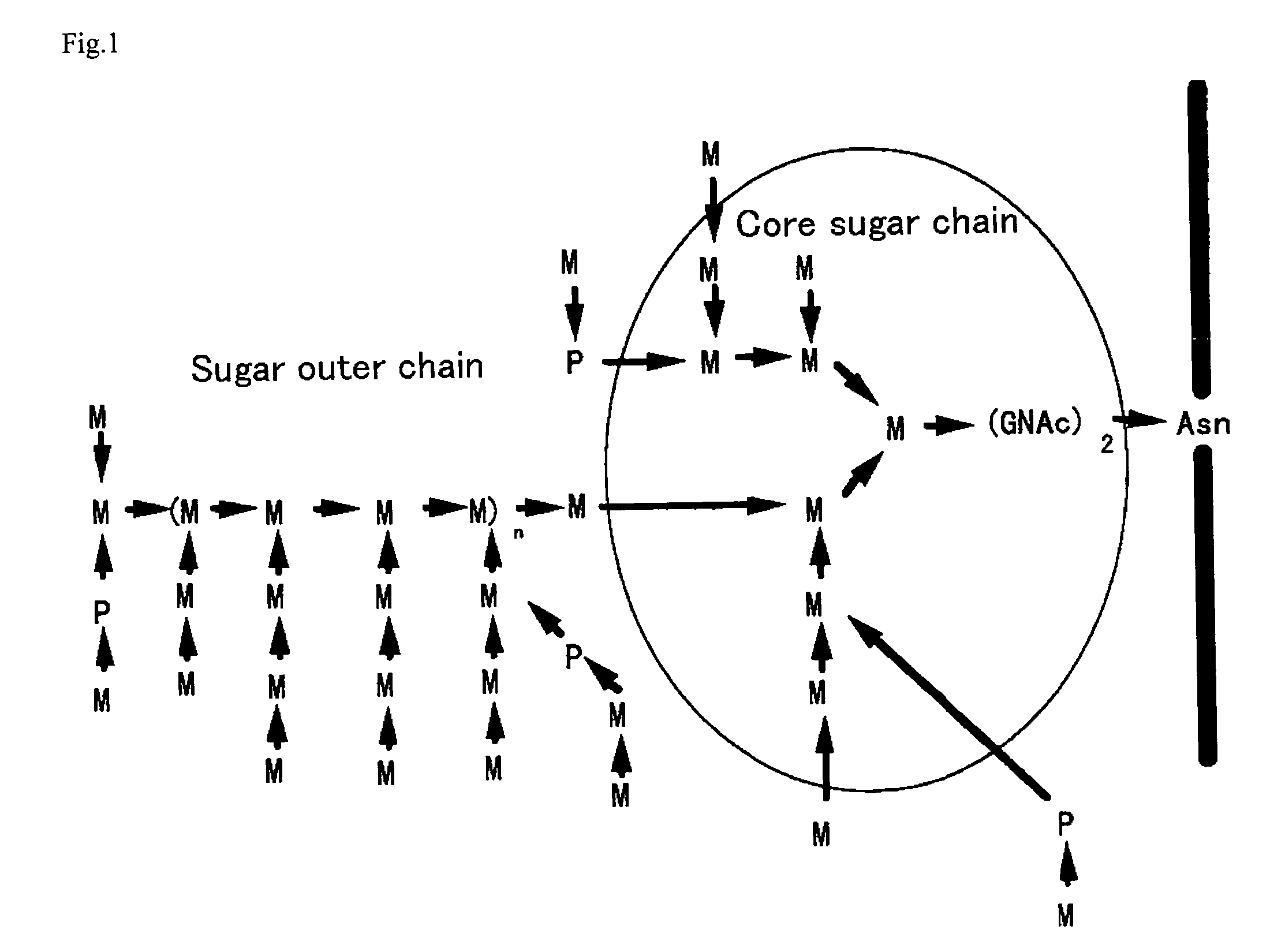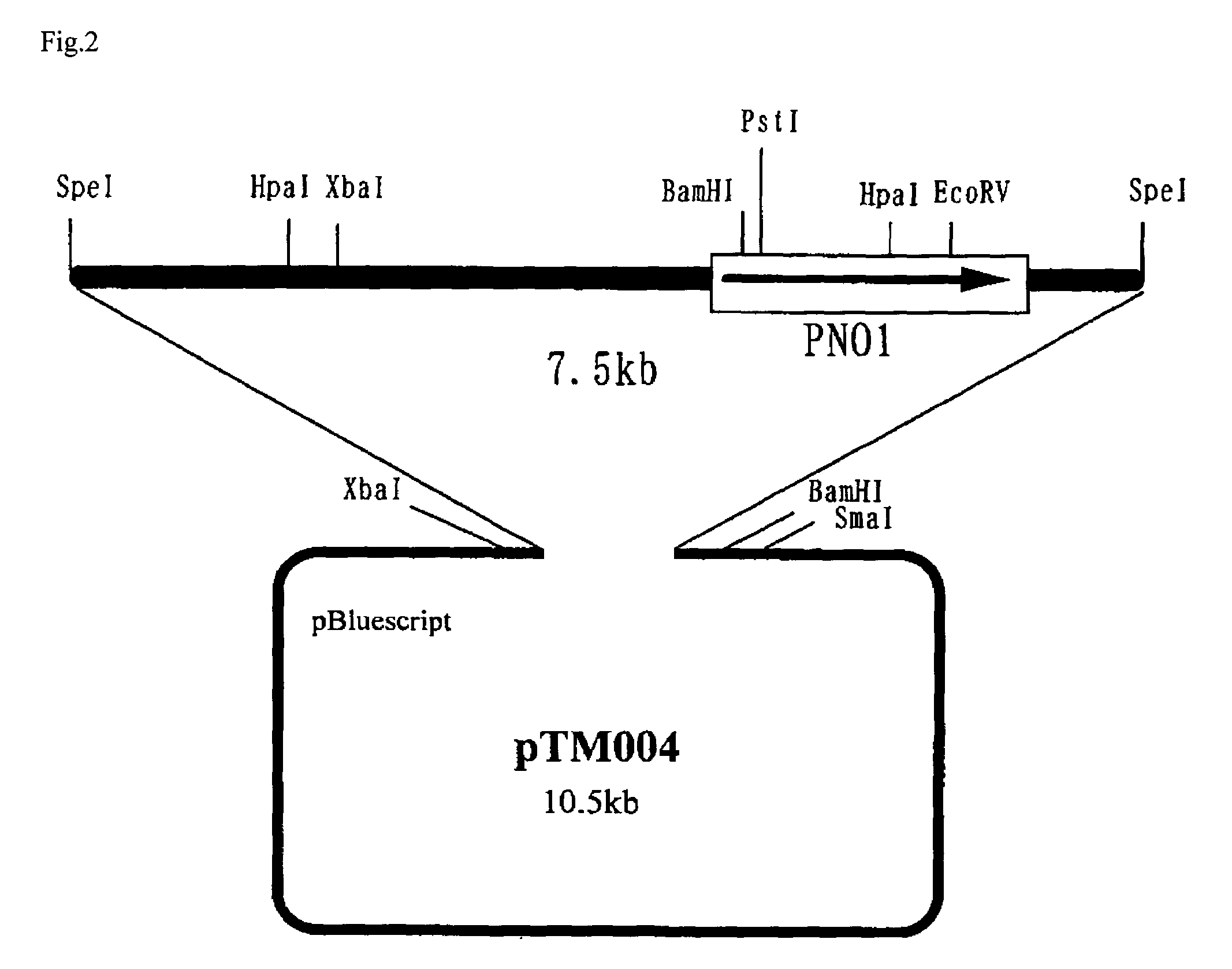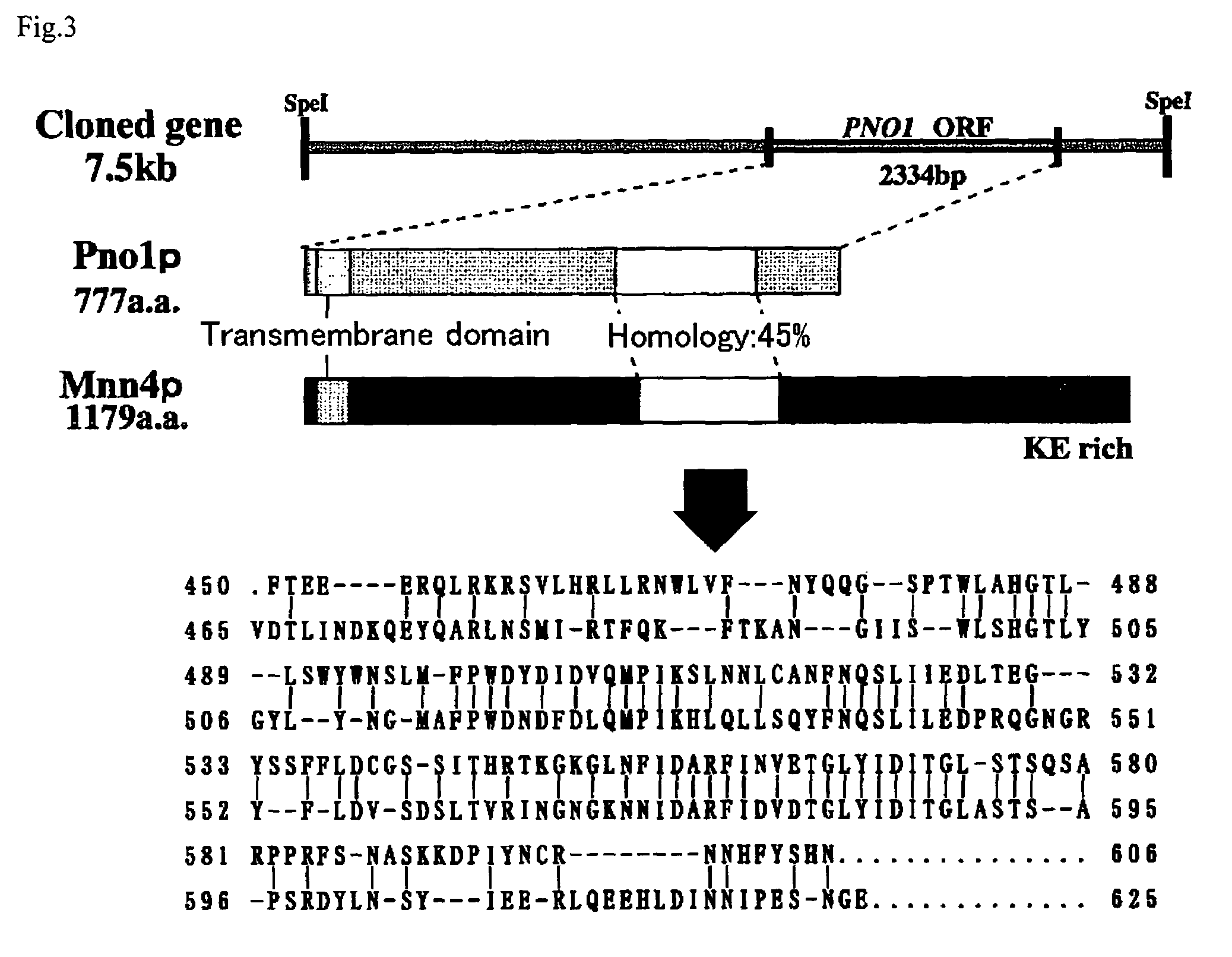Process for producing protein with reduction of acidic sugar chain and glycoprotein produced thereby
a technology of acidic sugar chain and glycoprotein, which is applied in the direction of enzymology, peptides, transferases, etc., can solve the problems of cerevisiae /i> having a big function problem, the acidic sugar chain in the core-like sugar chain cannot be sufficiently suppressed, and the structure and composition of the same sugar chain cannot be added
- Summary
- Abstract
- Description
- Claims
- Application Information
AI Technical Summary
Problems solved by technology
Method used
Image
Examples
example 1
Obtaining a Gene Coding a Mannose Phosphate-Transferring Protein Derived from a Yeast Belonging to the Genus Pichia
(1) Amplifying / Obtaining Saccharomyces cerevisiae MNN4 Gene by PCR Method
[0070]In order to clone a gene that is originated from a yeast belonging to the genus Pichia and participates in the addition of phosphate, it was planned to screen a homologous gene using, as a probe, MNN4 gene participating in the transfer of mannose phosphate in S. cerevisiae. S. cerevisiae MNN4 gene was first obtained by using the PCR method based on the DNA sequence disclosed in the literature [Japan Patent Laid Open Hei 9-266792]. The region used as a probe ranges from the 625th to the 2049th with ‘A’ of initiation codon ATG being 1st.
[0071]Primers shown by the base sequences of SEQ ID NO: 4 or SEQ ID NO: 5 in the sequence listing were synthesized. The primer shown by the base sequences of SEQ ID NO: 5 in the sequence listing has an added HindIII recognition sequence in the end. The chromoso...
example 2
Preparation of PNO1 Gene-Controlled Yeast Strain Belonging to the Genus Pichia
(1) Preparation of Plasmid for Controlling PNO1 Gene
[0083]PNO1 gene-controlled strain was prepared to examine the properties of the strain and of an expressed protein so as to elucidate the function of PNO1 gene of a yeast strain belonging to the genus Pichia. For this purpose, PNO1 gene on the chromosome of a yeast belonging to the genus Pichia was disrupted as a controlling means. At the same time, it was planned to prepare a strain expressing human ATIII (antithrombin III) as an example of glycoprotein.
[0084]ATIII is a single-stranded protein consisting of 432 amino acids with a molecular weight around 58 kDa that exists in normal human plasma at about 150 mg / L has four asparagine-linked sugar chain-addition sites. It has an activity of inhibiting a wide range of trypsin-type serine proteases including thrombin and Xa factor, and is a serum protease inhibitor playing an important role in the mechanism ...
example 3
Analyses of Properties of PNO1 Gene-Controlled Yeast Strain Belonging to the Genus Pichia and Produced Glycoprotein
(1) Alcian Blue Staining of PNO1 Gene-Controlled Yeast Strain Belonging to the Genus Pichia
[0089]Alcian Blue is a basic phthalocyanine-based dye. Alcian Blue staining is used as a simple method for evaluating a degree of phosphate group that gives a major negative charge in the cell wall [Ballou, C. E., Methods in Enzymology, 185, 440–470 (1990)]. Although Alcian Blue stains cells of a wild-type Saccharomyces cerevisiae, but it does not stain cells of S. cerevisiae MNN4 gene mutant. These results show that the phosphorylation of sugar outer chain was suppressed in the latter case. Therefore, the staining properties of PNO1 gene-controlled yeast strain belonging to the genus Pichia were compared with that of a wild-type yeast strain belonging to the genus Pichia or S. cerevisiae MNN4 gene mutant.
[0090]Each of PNO1 gene-controlled strain 9G4, wild-type yeast belonging to...
PUM
| Property | Measurement | Unit |
|---|---|---|
| structure | aaaaa | aaaaa |
| elongation | aaaaa | aaaaa |
| sugar chain structure | aaaaa | aaaaa |
Abstract
Description
Claims
Application Information
 Login to View More
Login to View More - R&D
- Intellectual Property
- Life Sciences
- Materials
- Tech Scout
- Unparalleled Data Quality
- Higher Quality Content
- 60% Fewer Hallucinations
Browse by: Latest US Patents, China's latest patents, Technical Efficacy Thesaurus, Application Domain, Technology Topic, Popular Technical Reports.
© 2025 PatSnap. All rights reserved.Legal|Privacy policy|Modern Slavery Act Transparency Statement|Sitemap|About US| Contact US: help@patsnap.com



